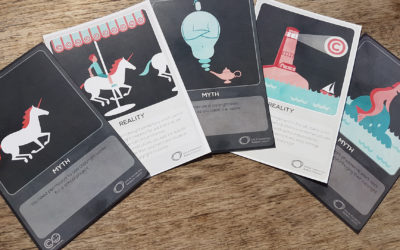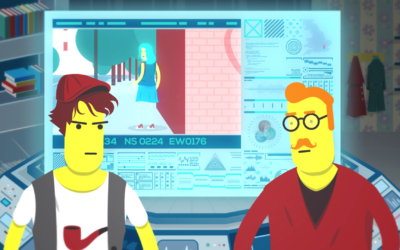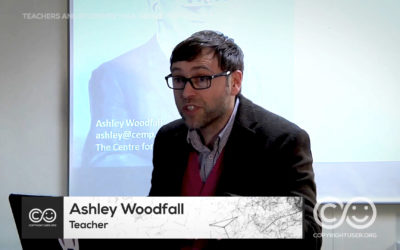Education
Authors: Ruth Soetendorp and Bartolomeo Meletti
Illustration: Davide Bonazzi
The use of materials protected by copyright is essential to the learning process. Educational resources exist in all formats that are recognised as ‘works’ in copyright law.
To minimise the burden on teachers and students who want to make use of copyright materials as part of their teaching and learning experience, the law includes a number of exceptions that allow for the use of all types of copyright work for certain educational purposes.
If you are using materials in an educational context this does not mean that you can forget about copyright. What it does mean is that you need to be aware of when you can use a work without obtaining permission or paying a licence fee, and when permission or a licence is required.
For example, the law makes clear that certain exceptions for education can only be relied upon in the absence of a relevant educational licensing scheme. This means that if a scheme has been set up to license the use of copyright material by educational establishments then the exception does not apply. For instance, if a school or college wants to record television broadcasts for use within a classroom, it should get a licence from the Educational Recording Agency. Other educational licensing schemes to be aware of are those run by the Copyright Licensing Agency, such as the CLA Schools licence and the NLA Media Access Schools licence. Where, however, the use of a work is not covered by one of these schemes, users can rely on the underlying exception.
Within any educational institution there is usually someone who is responsible for copyright issues. A first step could be to find out who has that role in your place of study or work. They should be able to help you understand whether your use of a work is permitted by an exception, or whether a relevant licensing scheme applies. In general, it is important to remember that you are not permitted to make commercial use of any copies created for educational purposes.
Exceptions for education and teaching
One of the most important exceptions for education permits the use of any type of work for the purpose of teaching (or as the law puts it: ‘for the sole purpose of illustration for instruction’). This means that copyright in the work is not infringed by an individual teacher or a student as long as they are copying the work to give or receive instruction (or when preparing to give or receive instruction), and the copying is used to illustrate a point about the subject being taught. Also, the law makes clear that ‘giving or receiving instruction’ allows copying when setting examination questions, communicating questions to students, and answering questions.
However, the exception only applies under the following conditions:
1) The purpose of the use is non-commercial
2) Where practical, there should be sufficient acknowledgement of authorship of the work
3) The use of the material is fair
There is no legal definition of what is fair or unfair in this context. It is an issue ultimately decided by courts depending on a number of factors, such as the amount of the work taken and whether the use would commercially compete with the copyright owner’s exploitation of the material. According to the UK government ‘minor uses, such as displaying a few lines of poetry on an interactive whiteboard, will be permitted, but uses which would undermine sales of teaching materials will still need a licence’. You can find the government’s guide on exceptions to copyright for ‘education and teaching’ here.
So, it is OK for a teacher to copy material onto a blackboard or an interactive whiteboard under this exception. And it is OK for students to copy that material into their notebooks or laptops. For example, a teacher might show a copy of a work by Pablo Picasso, Andy Warhol or Tracy Emin on an interactive whiteboard for a class of students studying art in the 20th century.
What the teacher cannot do under this exception, however, is make photocopies of a work for the students in their class; that type of copying is covered by a different educational exception (see below: Copying and using extracts of works).
There are two other important things to know about this exception. First, it applies to all types of teaching, not just teaching within a traditional educational establishment. Second, the exception cannot be overridden by contract. This means that any term of a contract seeking to prevent or restrict copying under this exception is unenforceable in law.
The law also recognises a number of other situations in which educational establishments are allowed to benefit from suspension of the rules that normally govern the use of copyright works.
Compiling anthologies for educational use that include published literary or dramatic works
No more than two pieces of a copyright work can be included in an anthology within a five-year period, and only provided sufficient acknowledgement is given.
Performing, playing or showing copyright literary, dramatic or musical works in the course of activities of an educational establishment
This exception applies where the audience comprises teachers, students and others directly connected with the establishment, and extends to cover showing a film to such an audience. Persons external to the educational institution such as parents and friends are considered not ‘directly connected with the establishment’. Therefore, if the establishment intends to include parents and others in the audience of the performance, playing or showing of a copyright work, permission must be obtained.
Recording of a broadcast for use in an educational establishment
In order to record a broadcast and play the recording within an educational setting, a licence from the Educational Recording Agency is required. However, if a particular broadcast is not covered by the ERA licensing scheme, the law provides an exception that allows educational institutions to record and play the broadcast anyway, without infringing copyright. This exception also allows institutions to play the recording over secure networks to students receiving instruction online. But, the exception only applies when the educational purposes are non-commercial, and when the recording is accompanied by a sufficient acknowledgement of authorship (where practical).
Copying and using extracts of works
The law provides an exception that allows an educational establishment to make copies of extracts of certain types of work (everything apart from broadcasts and free-standing works or art) for the purpose of instruction. So, under this exception, a teacher could make copies of a work for students in their class.
But, as with the exception for recording and playing broadcasts, copying and using extracts of works is only permitted in the absence of a relevant educational licensing scheme.
For example, if an educational institution wanted to make photocopies of a part of a book for students, it would have to get a licence from the Copyright Licensing Agency. The Copyright Licensing Agency provides a number of different licences for schools, permitting copying from books and magazines, from newspapers, and from published sheet music.
If there is no relevant licensing scheme available, then the educational establishment can rely on this exception. However, the exception only applies under certain conditions: the copy must be made for non-commercial purposes; it must be accompanied by an acknowledgement of authorship (where practical); and, no more than 5% of a work may be copied within any 12 month period.
Copies made under this exception can be communicated to students online, so long as the material is made available within a secure network that can only be accessed by staff and students.
It is important to note that most educational establishments already hold the relevant licences mentioned above. The combination of these educational licensing schemes and copyright exceptions means that teachers and students do not have to worry about seeking permission every time they want to use a copyright work for educational purposes.
Legal language:
There have not been many cases concerning the use of copyright materials in educational establishments. One decision, Universities UK Ltd v Copyright Licensing Agency Ltd [2002] EMLR 35; [2002] RPC 36 concerned the use of copyright materials in the preparation of course study packs. The tribunal concluded that if copies of artistic works were to be included in course packs (as opposed to ordinary class room use) an enhanced licence fee was payable.
Legal references:
The law on use of copyright materials in educational establishments in the United Kingdom is found in Sections 32-36 of the Copyright Designs and Patent Act 1988, which you can read here:
http://www.legislation.gov.uk/ukpga/1988/48/part/I/chapter/III/crossheading/education
For the changes to sections 32 (copying for teaching), 35 (recordings broadcasts) and 36 (copying and using extracts of works) made by the Copyright and Rights in Performances (Research, Education, Libraries and Archives) Regulations 2014 see here:
http://www.legislation.gov.uk/uksi/2014/1372/regulation/4/made
Related
Myth-Reality Cards
The Copyright Myth-Reality Cards consist of text and illustrations, with a copyright myth on one side and the true status on the other.
The Game is On! – Ep. 1
In a fictional land called London, Sherlock Holmes and John Watson meet a curious client: the toymaker Joseph …
Teachers & Students
Teachers and students at Bournemouth University discuss the role that copyright plays in their work and share their most pressing concerns and questions about copyright.











